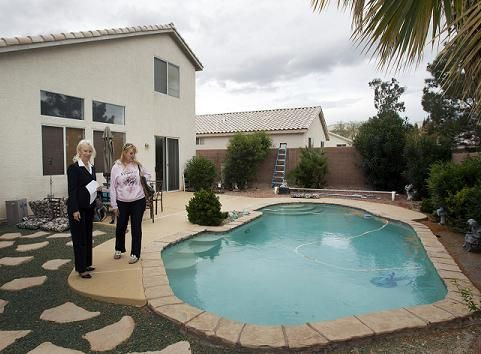US Home Price Growth To Slow On Increasing Supply, Rising Mortgage Rates

The rise in both borrowing costs and the supply of homes for sale are likely to keep a lid on U.S. home-price gains in the second half of the year, analysts say.
Case-Shiller 20-City house prices rose by 1 percent in May from April -- the slowest rate of growth for four months. And the latest CoreLogic reading, from June, showed a rise of just 0.6 percent from May. That’s the slowest pace in six months.
Further evidence that the rate of house price growth is slowing came from the Trulia asking price data, which fell by 0.3 percent in July from the previous month. That was the first fall in asking prices in 18 months. Asking prices tend to lead sales prices by two or more months. Redfin, the online real estate brokerage, also reported that the number of people taking home tours declined slightly in June.
While none of this means home prices are set to decline, it could mean the beginning of a slowdown in price growth. “We think that price growth will continue to moderate from here,” said Paul Diggle at Capital Economics.
Mortgage rates rose further in July and now stand a full percentage point above the level of four months ago in anticipation that the Federal Reserve will curtail bond purchases later this year, while applications for mortgages to purchase a home have dropped about 12 percent. The 30-year mortgage interest rates reached a peak of 4.68 percent on the MBA measure in mid-July, and 4.51 percent on the Freddie Mac measure.
Real gross domestic product growth accelerated from an annualized rate of 1.1 percent in the first quarter to 1.7 percent in the second. Meanwhile, the unemployment rate fell to 7.4 percent in July, from 7.6 percent previously and 8.1 percent when the Fed restarted asset purchases last year.
“The cumulative improvement in the labor market conditions since the launch of QE3 leaves the Fed on track to begin tapering in September,” Diggle said.
At the same time, the number of homes for sale, the most direct supply indicator, climbed 1.8 percent month-on-month in June to 2.27 million. New housing inventory is now 11 percent above the level it was a year ago, while existing inventory is 7.6 percent below that level. With prices rising and selling conditions improving, Diggles expects additional supply to come onto the market later this year.
Home prices have gone up about 12 percent over the past year and many of the previously hardest-hit markets in the Southwest and West have seen gains as much as double that. Capital Economics’ year-end forecast is for price growth of 8 percent from a year ago, signaling a return to normalcy in the housing market.
© Copyright IBTimes 2024. All rights reserved.




















